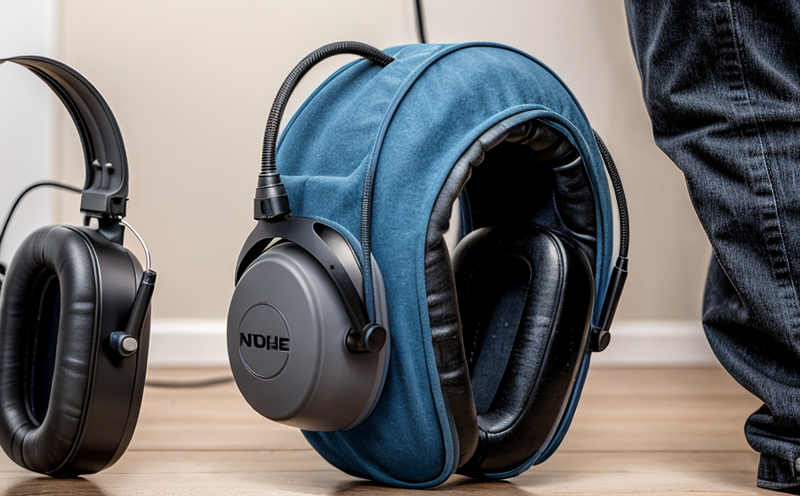ANSI S12.6 Binaural Acoustic Testing
The ANSI S12.6 standard specifies the procedures and requirements for binaural acoustic testing of hearing protectors. This form of testing is crucial in ensuring that the devices provide accurate protection against noise hazards, thereby protecting workers' hearing health.
Binaural testing involves two ears being tested simultaneously to ensure proper attenuation levels are achieved at both left and right ear canals. The standard defines the methods for measuring the performance of hearing protectors under specified conditions using an audiometric coupler. It ensures that any hearing protector certified to this standard meets the required attenuation levels across a range of frequencies.
The testing process typically involves placing the hearing protector on the subject's head and measuring the noise reduction in both ears. The results are then compared against the standard's specified criteria to determine compliance. This approach is particularly important for devices like earplugs, earmuffs, and other forms of hearing protection that need to be effective at both ears.
Testing according to ANSI S12.6 involves several key steps:
- Setting up the test environment with appropriate sound sources
- Placing the audiometric coupler in each ear canal
- Attaching the hearing protector to the coupler
- Measuring and recording the noise reduction at various frequencies
- Comparing the measured results against ANSI S12.6 specifications
The importance of binaural testing cannot be overstated, especially in industries where workers are exposed to high levels of noise for prolonged periods. By ensuring that both ears receive adequate protection, employers can significantly reduce the risk of noise-induced hearing loss.
The standard also considers factors such as the fit factor and the attenuation provided by the protector at different frequencies. This ensures that the devices not only meet the required noise reduction but also provide a comfortable fit for the user.
Compliance with ANSI S12.6 is essential for manufacturers looking to ensure their products are safe and effective in real-world environments. By adhering to this standard, they can demonstrate their commitment to worker safety and compliance with international regulations.
Applied Standards
The ANSI S12.6 standard is widely recognized for its rigorous testing procedures that ensure the accuracy and reliability of hearing protectors. This standard is particularly important in industries where noise levels are a significant concern, such as construction, manufacturing, mining, and aviation.
In addition to ANSI S12.6, other relevant standards include ISO 4869-3:2017, which specifies the methods for determining the sound attenuation of hearing protectors, and EN 352-2:2016, which provides a similar framework for European markets. These standards are designed to ensure that hearing protectors meet international safety standards.
For manufacturers looking to expand their global reach, compliance with these standards is crucial. By adhering to ANSI S12.6 and other related standards, companies can ensure that their products are accepted in various regions around the world, enhancing market access and customer confidence.
Industry Applications
The ANSI S12.6 standard is particularly relevant for industries where noise levels are a significant concern, such as construction, manufacturing, mining, and aviation. In these sectors, workers often face prolonged exposure to high noise levels, which can lead to hearing damage if protective measures are not taken.
For example, in the construction industry, contractors use heavy machinery that generates loud noises during operations. Workers exposed to these environments require effective hearing protection to minimize their risk of developing hearing loss over time. By ensuring compliance with ANSI S12.6, manufacturers can provide workers with reliable and accurate hearing protectors.
In manufacturing facilities, the noise generated by machinery can be even more intense, especially in areas like stamping plants or textile mills. Here too, binaural acoustic testing ensures that employees receive adequate protection for both ears, reducing the risk of noise-induced hearing loss.
The mining sector presents another challenging environment due to the high levels of noise from drilling machines and other equipment used underground. Miners exposed to these conditions benefit greatly from accurate and reliable hearing protectors, which can only be achieved through rigorous testing according to ANSI S12.6 standards.
In aviation, pilots and ground staff are often exposed to high noise levels during takeoffs and landings. Ensuring that the hearing protection devices they use meet the stringent requirements of ANSI S12.6 is essential for maintaining their health and safety.
International Acceptance and Recognition
- Australia: The Australian Standards AS/NZS 4879-2013 for hearing protectors aligns closely with ANSI S12.6, ensuring mutual recognition of testing results.
- New Zealand: New Zealand's standard NZS 4879:2013 is based on ANSI S12.6 and ensures compatibility between the two systems.
- European Union: The European Standard EN 352-2, which covers hearing protectors, is aligned with ANSI S12.6, facilitating international trade and ensuring uniformity in testing methods.
- United Kingdom: The UK's BS EN 352-2:2016 standard for hearing protectors also aligns closely with ANSI S12.6, promoting global consistency in product safety standards.
The widespread acceptance of ANSI S12.6 across these regions underscores its importance and the need for manufacturers to comply with this standard to ensure their products meet international requirements.





